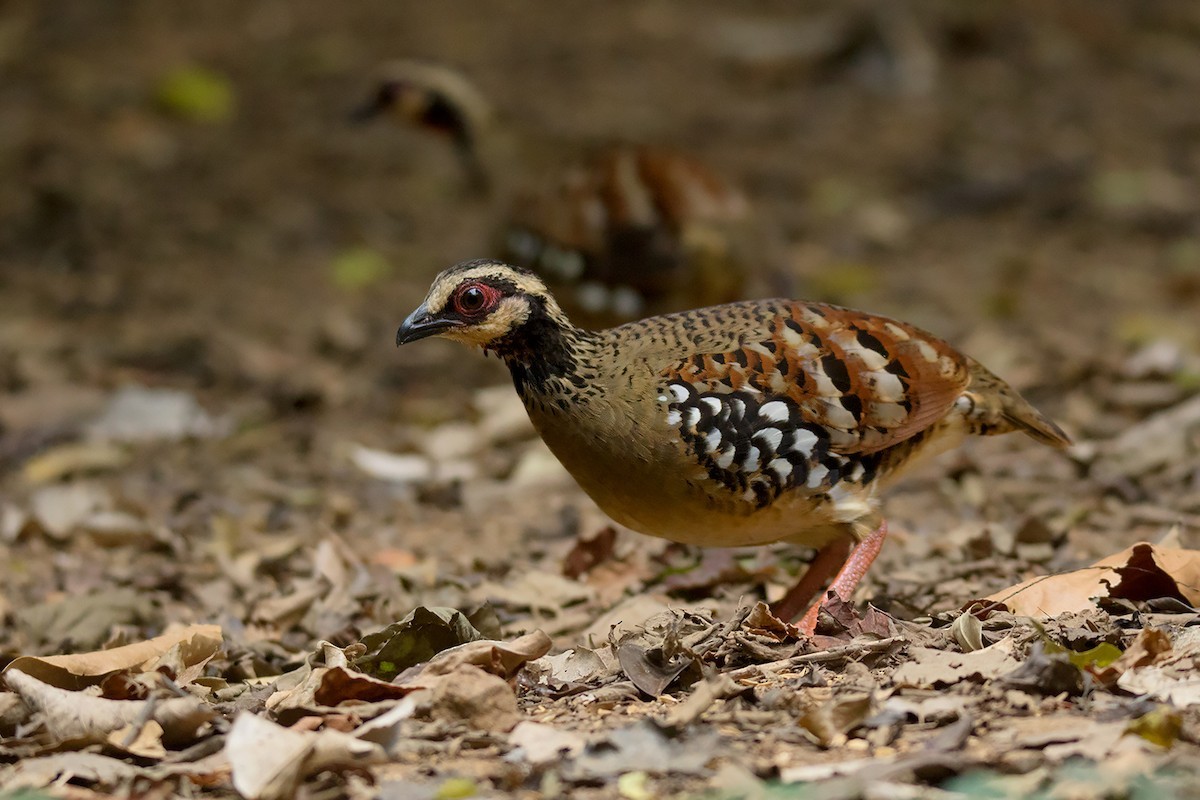Bar-backed Partridge
A species of Hill Partridges and Green-legged Partridges Scientific name : Arborophila brunneopectus Genus : Hill Partridges and Green-legged Partridges
Bar-backed Partridge, A species of Hill Partridges and Green-legged Partridges
Botanical name: Arborophila brunneopectus
Genus: Hill Partridges and Green-legged Partridges
Content
Description General Info
 Photo By Ayuwat Jearwattanakanok
Photo By Ayuwat Jearwattanakanok Description
The bar-backed partridge is typically 280 mm (11 in) long in total, with an average wingspan of 144 mm (5.7 in) for males and 134 mm (5.3 in) for females of the species. They usually have 6–7 cm (2.4–2.8 in) tails, and their bills are about 20–21 mm (0.79–0.83 in) in length. On average, males have a 42 mm (1.7 in) tarsus, while females have 39 mm (1.5 in). The males are similar in color to females. It is mostly buff in color, with black running from the beak, around the eyes, and to the throat, as well as a black crown and feather tips along its back. It has red eyelids, and its wing feathers are white with black tips, adding brown near the back of the bird. 
Size
29 cm
Nest Placement
Ground
Feeding Habits
Bar-backed Partridge typically forages in leaf litter in groups of 4–9. The specific diet is unspecified, but it may include various seeds, insects, and other invertebrates common to leaf litter ecosystems.
Habitat
The bar-backed Partridge typically resides in a variety of evergreen forest environments. These habitats are generally characterized by a mix of dry, semi-evergreen, and hill evergreen forests. Bamboo-dominated areas within these forests are also a common aspect of the bar-backed Partridge's preferred habitat. The bird's habitat selection is not limited to specific forest types but encompasses a diverse range of evergreen forest conditions across broader geographical regions.
Dite type
Omnivorous
General Info
Feeding Habits
Bird food type
Behavior
They flock in groups of about 4–9, usually consisting of two parents and their latest offspring or sometimes two families. They feed on seeds, small shells, and insects found in leaves on the forest floor. When disturbed by humans, they quickly scatter into the underbrush. Captive male bar-backed partridges attract a mate by exposing the red feathers around their throat and calling. They breed around May to June, and their 37 by 28 mm (1.5 by 1.1 in) eggs are usually laid in a hole covered with bamboo and grass. 
Distribution Area
The bar-backed partridge is found in Cambodia, China, Laos, Myanmar, Thailand, and Vietnam over an estimated 486,000 square kilometres (188,000 sq mi). Its natural habitats are subtropical or tropical moist lowland forests and subtropical or tropical moist montane forests. It is typically found at relatively low elevations, under 3,000 feet (910 m), but have been seen at 5,000 feet (1,500 m) and above. 
Species Status
The bar-backed partridge has been evaluated as Least Concern by the IUCN due to its large range; however, its population is slowly declining because of habitat loss and hunting, although this decline is not steep enough to make it Vulnerable. 

 Photo By Ayuwat Jearwattanakanok
Photo By Ayuwat Jearwattanakanok